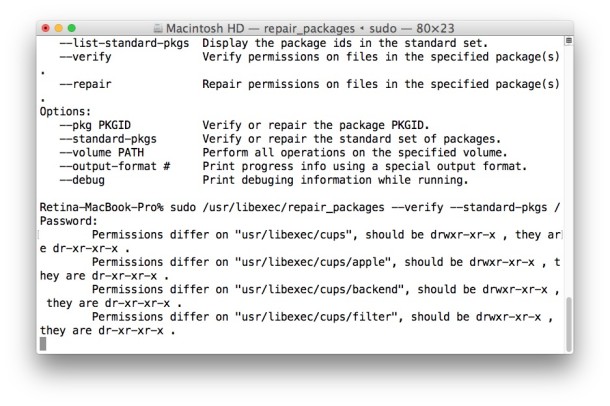
- Change folder permissions mac command line for free#
- Change folder permissions mac command line how to#
- Change folder permissions mac command line full#
- Change folder permissions mac command line windows 10#
- Change folder permissions mac command line plus#
and it will list the apps that are unchecked in the policy dialog. If you're interested, you can invert the query to. (Updated answer based on Shneor answers, thanks! On their answer they note that auth_value is an int and not a bool, but the WHERE filter still works.)
Change folder permissions mac command line full#
Will list out the apps and binaries that are allowed Full Disk Access, i.e.: /usr/libexec/atrun 'select client from access where auth_value and service = "kTCCServiceSystemPolicyAllFiles"' So the query: sqlite3 /Library/Application\ Support//TCC.db \

The service column will be kTCCServiceSystemPolicyAllFiles for Full Disk Access.
Change folder permissions mac command line for free#
You can download the app for free from the official website.Building on answer, the sqlite DB does have the answer for which permission is granted.
Change folder permissions mac command line windows 10#
That utility will provide you a quick and simple way to change the owner of a file or folder in Windows 10 without using complex commands. You can use a third-party tool called TakeOwnershipPro to place a dedicated option in the context menu in File Explorer.
Change folder permissions mac command line how to#
How to Quickly Take the Ownership of a File or Folder in Windows 10? Do not reassign the owner of the root system folders (C:\Windows, C:\Program Files, etc.) or for the entire system partition otherwise, you can damage your Windows installation. Takeown /F "C:\permissions.log " /S Īssign a group of administrators as the owner of all text files in the Windows directory: takeown /F %windir%\*.txt /AĪssign the ownership to the group of local administrators for all nested files and folders, skip the directories to which the user has access permissions: takeown /F C:\PS\ /A /R /D YĪssign the current user as the owner of all *.docx files in a public shared folder on the manfs01 file server: takeown /S manfs01 /F Public \*.docx If other users access this folder, you need to check and change the NTFS access permissions using the icacls utility or File Explorer.Īssign yourself to own the permissions.log file on the remote computer: : Now you can open and manage previously inaccessible folder. To make yourself the owner of, for example, the C:\PS directory, enter the following command: takeown /F "C:\PS"Īfter executing the command, you will receive a message that you successfully became the owner of particular objects in the specified folder. To make things clearer, here are some examples of using the takeown.exe utility to change the ownership of files and folders in Windows 10 (or any modern Windows version.)
Change folder permissions mac command line plus#
You will find brief explanations on how takeown.exe works, plus some examples. You can also find the list of all parameters for the takeown.exe utility by typing in the takeown /? command in the Command prompt. If the current user does not have permission to view the contents of the directory (list files NTFS permissions,) this parameter specifies whether to change the owner of the file. Recursively change the owners for all nested files and folders in the specified directory This command gives ownership to the administrators group instead of the current user

Use that part of the command to specify the credentials of the user under which you want to execute the takeown command By default, the command runs on a local computer (your PC) You can specify the IP address or the name of the remote computer on which you want to execute the takeown command. Here you must specify the full path to the file or directory whose owner you want to change.

Takeown /F ] Parameters of the takeown command: The takeown command has the following syntax: You do not need to specify the full path to it in the Command prompt. Where to find the takeown.exe utility in Windows 10? In Windows 10 and some older versions, the takeown.exe utility “lives” in the C:\Windows\System32 directory. It does not allow you to specify an arbitrary user or group as the owner of the directory or file. With the takeown command, you can change object ownership and assign it only to the current user or the local administrator group. Of course, to change the owner of a file, you must be the owner or have the administrator’s permissions.

In this article, we will show you how to take ownership of a file or folder from the Command prompt using the takeown command. Also, you can use the built-in console utility takeown.exe. Go to Security > Advanced > Owner > Change. Select a file or folder for which you want to change the owner. You can change the owner of a file or folder in Windows using File Explorer.


 0 kommentar(er)
0 kommentar(er)
